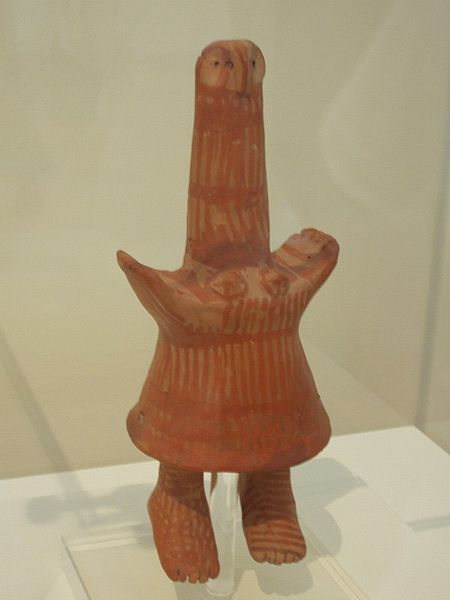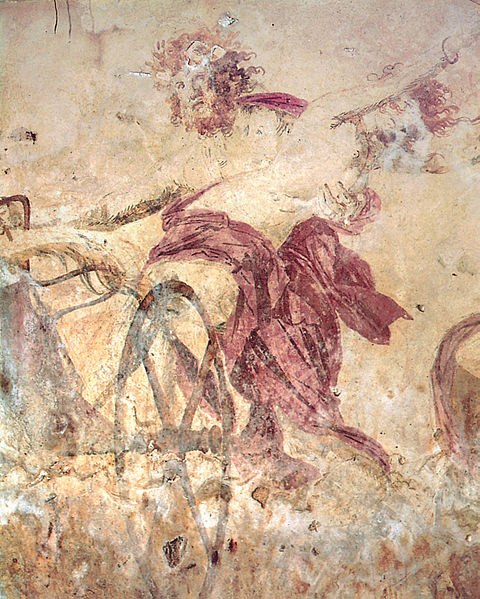Aegean art is art that was created in the lands surrounding, and the islands within, the Aegean Sea during the Bronze Age, that is, until the 11th century BC, before Ancient Greek art. Because is it mostly found in the territory of modern Greece, it is sometimes called Greek Bronze Age art, though it includes not just the art of the Mycenaean Greeks, but also that of the Cycladic and Minoan cultures, which converged over time.
The Athens 2004's mascots were based on this clay model at the National Archaeological Museum
Minoan pottery "Marine Style" flask with octopus, c. 1500-1450 BC
Group of three Cycladic figurines, early Spedos type, Keros-Syros culture (EC II)
Gold cups from Grave IV and V (Grave Circle A), Mycenae
Ancient Greek art stands out among that of other ancient cultures for its development of naturalistic but idealized depictions of the human body, in which largely nude male figures were generally the focus of innovation. The rate of stylistic development between about 750 and 300 BC was remarkable by ancient standards, and in surviving works is best seen in sculpture. There were important innovations in painting, which have to be essentially reconstructed due to the lack of original survivals of quality, other than the distinct field of painted pottery.
Heracles and Athena, black-figure side of a belly amphora by the Andokides Painter, c. 520/510 BC
The Hellenistic Pergamon Altar: l to r Nereus, Doris, a Giant, Oceanus
Hades abducting Persephone, 4th-century BC wall painting in the small Macedonian royal tomb at Vergina
Detail of a black-figure vase, c. 540. White, which has not worn well, and a different red-purple are also used.








